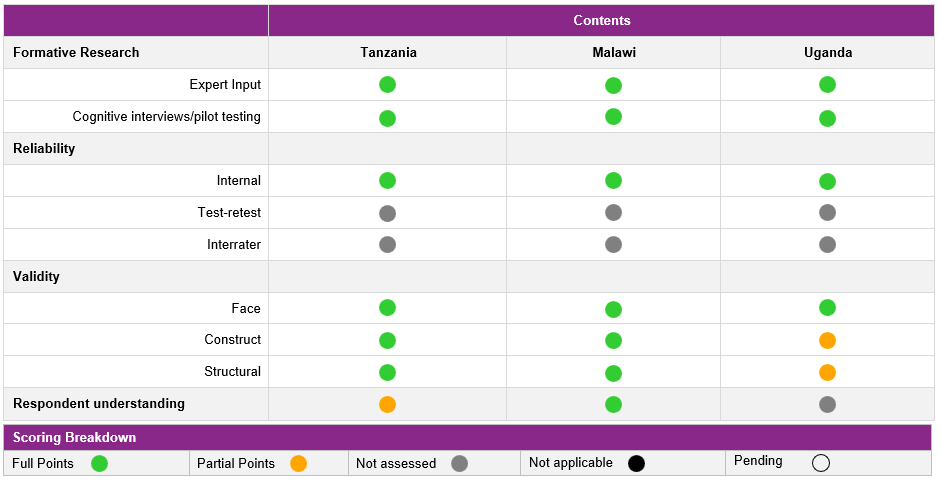Improving women’s self-efficacy—that is, their belief in their capabilities to act effectively towards a goal—is an important and urgent policy goal. Despite being the sector that employs most of the labor force across the Global South, methods of measuring self-efficacy in agricultural activities in low-income countries remain understudied. This 10-item scale allows us to capture the extent to which individuals believe in their own capacity to reach goals regarding different common activities in agriculture, grounded in McGee et al.’s (2009) framework for measuring entrepreneurial self-efficacy. This scale can be used to assess levels of agricultural self-efficacy in a population, to determine which sub-domains of self-efficacy are strongest or weakest (e.g., managing labor or obtaining a loan) as well as to assess the impact of agriculture-related projects.
Link to: tool content and guidelines, CTO file, and statistical annex
Duration: This tool takes on average 2.95 minutes to be implemented
Permitted use of the tool: users are free to use the tool with citation “MAGNET (2023). Agricultural Self-efficacy Scale. http://magnet.ifpri.info/agricultural-self-efficacy-scale/”
Tool sample
Please listen to each statement and tell me how much confidence you have in your ability to carry out each activity.
- Identify the best crops to plant on a field
- Locate the market or selling spot where you will be able to get the highest price for each crop.
- Determine what type of inputs (such as improved seeds or fertilizer) you will use on your crops.
Response Options:
How much do you agree with the following statements? Likert scale-agreement
1. No confidence at all 2. Slight confidence 3. Some confidence 4. A great deal of confidence 5. Complete confidence
Measurement Properties
- Geographies Tested: Malawi, Tanzania, Uganda
- Populations included: Female, Male
- Age range: Adults
For details on these testing metrics, visit our scoring methodology page.

 International Food Policy Research Institute
International Food Policy Research Institute